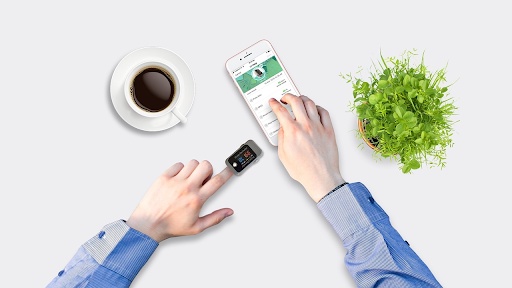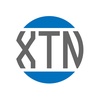The advent of patient portals marks a significant milestone in the healthcare industry, revolutionizing how patients and providers communicate and manage health information. These digital platforms have evolved from basic online repositories of medical records to sophisticated tools that offer a wide array of functionalities, improving patient engagement, streamlining healthcare delivery, and facilitating better health outcomes. This article explores the evolution of patient portals, their impact on patient-provider communication, and future trends in this domain.
Early Stages: Initial Development and Adoption
The initial development of patient portals can be traced back to the late 1990s and early 2000s, coinciding with the digitization of healthcare records. Early portals were rudimentary, primarily serving as electronic health record (EHR) systems that allowed patients to view their medical histories, lab results, and prescriptions online. Adoption was slow, hindered by technological barriers, lack of patient and provider awareness, and concerns over security and privacy.
Expansion and Integration: Enhanced Features
The expansion phase of patient portals began in the late 2000s, driven by technological advancements and policy incentives like the Health Information Technology for Economic and Clinical Health (HITECH) Act. Portals started to offer more interactive features, such as appointment scheduling, prescription refill requests, and direct messaging with healthcare providers. This phase also saw the integration of portals with other health IT systems, making them more user-friendly and efficient.
Improving Patient Engagement: A Focus on Usability and Accessibility
As patient portals evolved, there was a growing emphasis on enhancing patient engagement. This led to improvements in usability and accessibility, making portals more intuitive and easier to navigate. Features like personalized health reminders, educational resources, and health trackers were added to encourage patients to take a more active role in managing their health. Mobile compatibility and multilingual options further expanded access to diverse patient populations.
Enhancing Communication: Secure Messaging and Telehealth Integration
One of the most significant impacts of patient portals has been the enhancement of patient-provider communication. Secure messaging features allow for quick, confidential conversations between patients and their healthcare teams. The integration of telehealth services within portals, accelerated by the COVID-19 pandemic, further transformed communication, enabling virtual consultations and remote monitoring of patients’ health.
Data Sharing and Interoperability: The Future of Patient Portals
Looking towards the future, the evolution of patient portals is likely to focus on data sharing and interoperability. As patients increasingly seek care from multiple providers, the ability for different health systems to seamlessly share information through portals will be crucial. This interoperability can lead to more coordinated care, better health outcomes, and a more holistic view of a patient’s health journey.
Patient Empowerment and Informed Decision Making
Patient portals play a pivotal role in empowering patients, providing them with access to their health information and educational resources. This access enables patients to make more informed decisions about their health and treatment options, fostering a collaborative approach to healthcare.
Challenges and Limitations: Privacy, Security, and Digital Divide
Despite their benefits, patient portals face challenges related to privacy, security, and the digital divide. Ensuring the confidentiality and security of sensitive health information remains a top priority. Additionally, there is a need to address the digital divide, ensuring that all patients, regardless of socioeconomic status or technological literacy, can benefit from portal technologies.
Impact on Healthcare Outcomes: Quality, Efficiency, and Patient Satisfaction
The impact of patient portals on healthcare outcomes has been notable. They have improved the quality and efficiency of healthcare delivery, reduced administrative burdens on healthcare providers, and increased patient satisfaction. Studies have shown that patient portals can lead to better medication adherence, reduced hospital readmissions, and improved chronic disease management.
Conclusion
In the world of healthcare technology, Holon Solutions has emerged as a trailblazer, embracing a philosophy that interweaves advanced technology with the human element at the core of healthcare services. The essence of Holon's approach is inspired by the concept of a "holon," symbolizing both unity and part of a larger system. This philosophy is more than an abstract idea; it's the driving force behind Holon's mission to strengthen human connections in healthcare. By incorporating this concept into their operations, Holon is not just creating technology; they are building bridges between individuals and the broader healthcare ecosystem.
Holon's platform is a testament to their commitment to simplicity and efficiency. Unlike conventional healthcare technologies, it is designed to streamline healthcare processes with tailored tools that make complex procedures more manageable. Holon's proprietary sensor technology plays a crucial role in this. By aggregating patient data from various sources and integrating it into customized clinical workflows, Holon is addressing one of the most significant challenges in healthcare: information overload. This strategic automation not only saves time for medical professionals but also combats the prevalent issue of burnout, allowing healthcare providers to refocus on what matters most—patient care.
In the competitive landscape of healthcare technology, Holon distinguishes itself through its efforts to alleviate the administrative burdens that healthcare professionals face daily. By harnessing smart technology and intuitive design, Holon introduces customized tools, services, and insights that not only demonstrate tangible business returns but also have a profound impact on human interactions and outcomes. This dual focus is crucial in an industry where the balance between efficiency and empathy is often hard to achieve.
The Holon Community, a cornerstone of their approach, optimizes healthcare processes by streamlining the delivery of patient data from numerous sources to any point of care. This integration, which works effortlessly with existing infrastructures, enhances professional fulfillment and allocates more time for patient-centric care. It's a clear example of how technology can be used to put patients and healthcare providers first.
Innovation is deeply ingrained in Holon's ethos, particularly in their Innovation Lab. Here, the team is encouraged to think without limits, leveraging technology and intuitive design to accentuate the human aspect of healthcare services. This lab is not just a space for creation; it's a breeding ground for transformative solutions that reflect Holon's commitment to bold thinking, simplification, customer empathy, agility in a SaaS environment, and the humanization of every interaction. This approach is pivotal in fast-tracking the development of revolutionary solutions that resonate with Holon's ambition to spearhead transformative changes in healthcare.
Holon's unwavering pursuit to redefine the healthcare experience is remarkable. By addressing professional burnout, reducing administrative strain, and enriching patient care, Holon stands steadfast in their vision of infusing a more humane touch into healthcare innovation. In a world where technology often feels impersonal, Holon Solutions is a beacon of hope, demonstrating that the future of healthcare can be both technologically advanced and profoundly human.


No comments yet